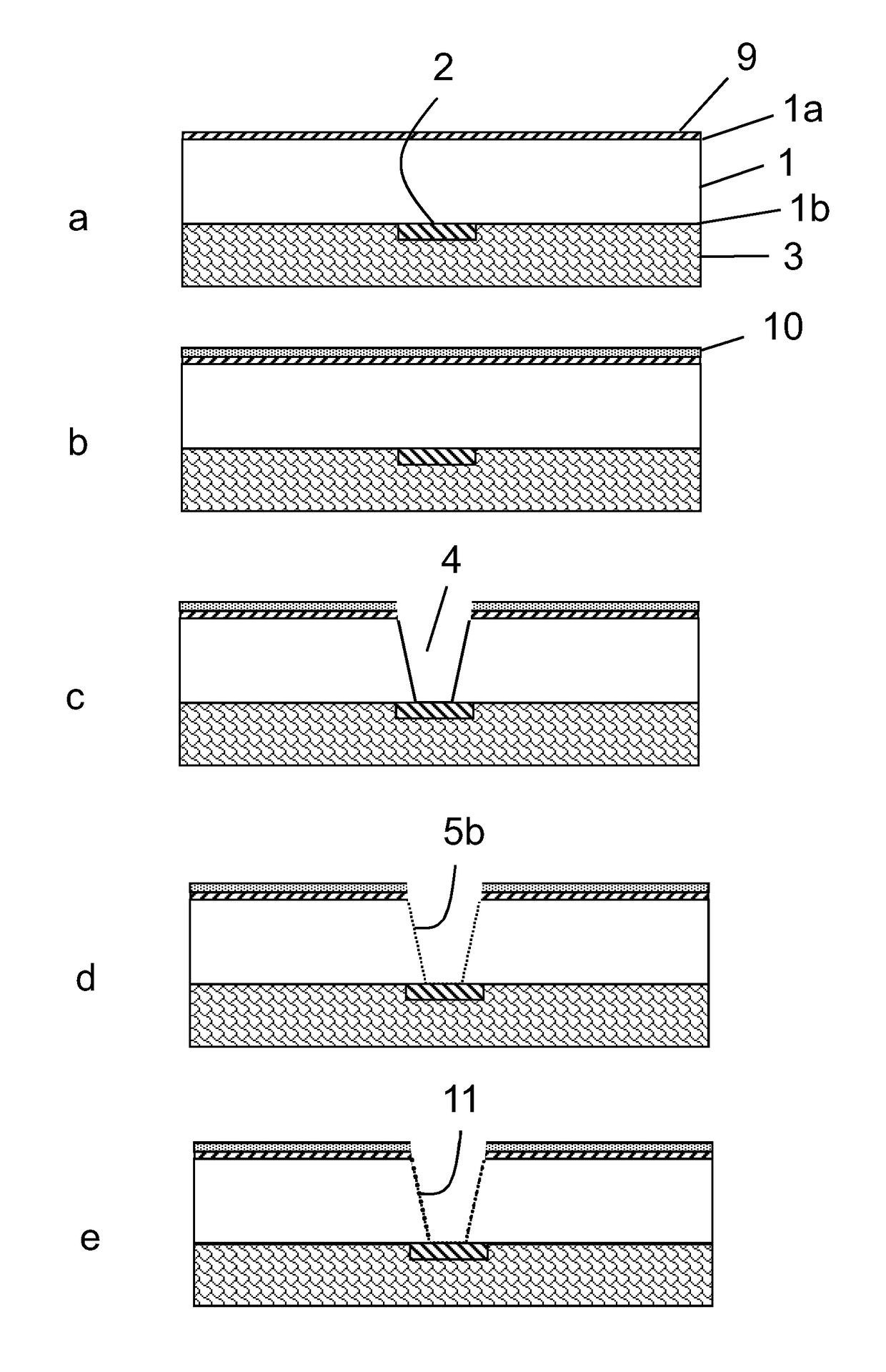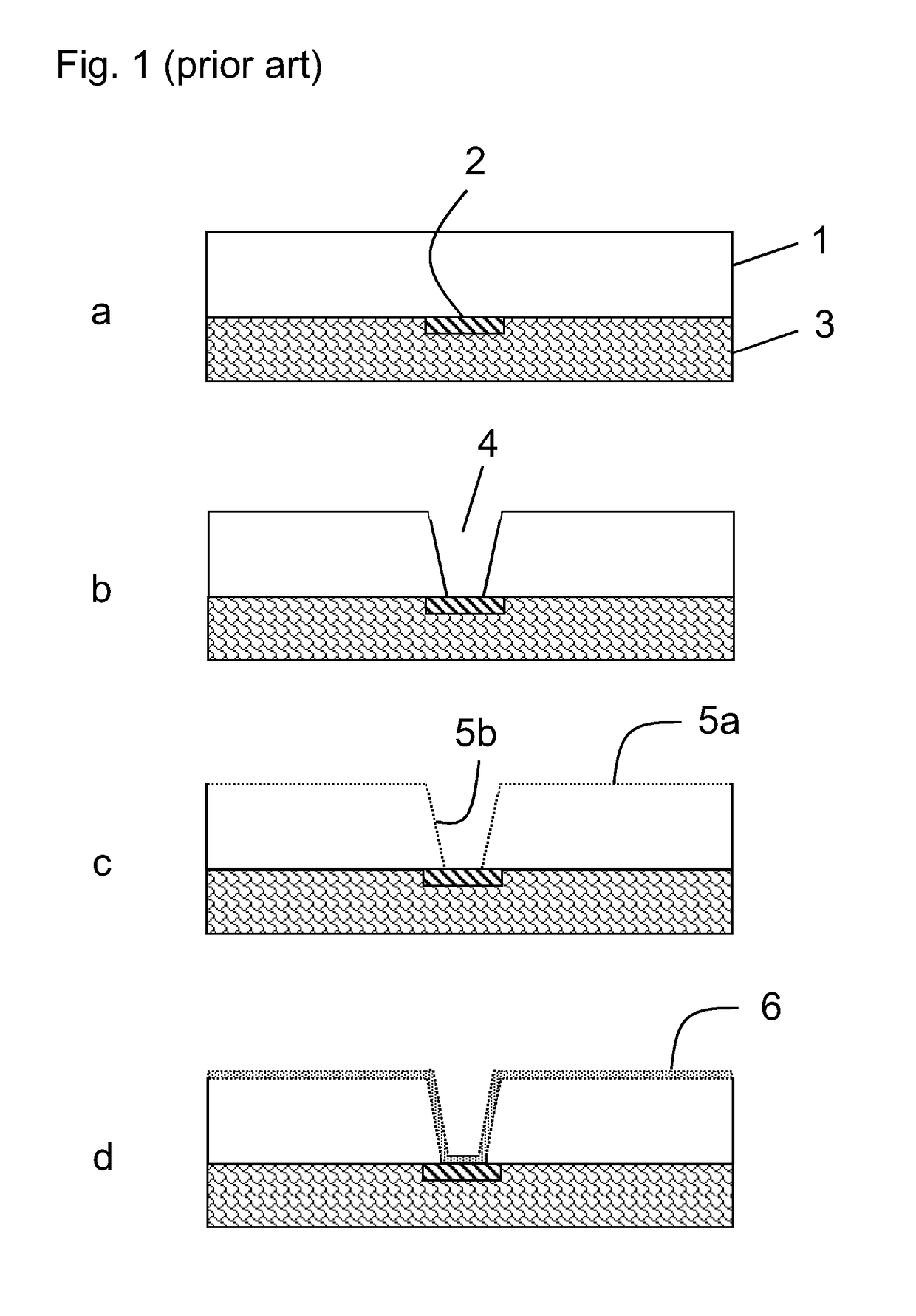Method for manufacture of fine line circuitry
a technology of fine line circuitry and manufacturing method, which is applied in the direction of printed element electric connection formation, insulating substrate metal adhesion improvement, liquid/solution decomposition chemical coating, etc., can solve the problems of undesired delamination of copper, weak adhesion between the conductive layer and the dielectric surface of the build-up layer, and undesired delamination of the copper layer. , to achieve the effect of avoiding or minimizing the disadvantages
- Summary
- Abstract
- Description
- Claims
- Application Information
AI Technical Summary
Benefits of technology
Problems solved by technology
Method used
Image
Examples
Embodiment Construction
[0026]The method for manufacture of fine line circuitry is in more detail described below. The figures shown herein are simply illustrative of the process. The figures are not drawn to scale, i.e. they do not reflect the actual dimensions or features of the various layers in the laminate. Like numbers refer to like elements throughout the description.
[0027]Now referring to FIG. 2a, in accordance with a preferred embodiment of the present invention, there is provided a dielectric build-up layer (1) which may be made of an organic material or a fiber-reinforced organic material or a particle-reinforced organic material, etc., for example, epoxy resin, polyimide, bismaleimide triazine, cyanate ester, polybenzocyclobutene, or glass fiber composite thereof, etc. The build-up layer (1) comprises a front side (1a) and a back side (1b). The front side (1a) of the build-up layer (1) consists of bare dielectric material having a smooth surface which comprises an adhesion promoting layer (9). ...
PUM
| Property | Measurement | Unit |
|---|---|---|
| thickness | aaaaa | aaaaa |
| width | aaaaa | aaaaa |
| temperature | aaaaa | aaaaa |
Abstract
Description
Claims
Application Information
 Login to View More
Login to View More - R&D
- Intellectual Property
- Life Sciences
- Materials
- Tech Scout
- Unparalleled Data Quality
- Higher Quality Content
- 60% Fewer Hallucinations
Browse by: Latest US Patents, China's latest patents, Technical Efficacy Thesaurus, Application Domain, Technology Topic, Popular Technical Reports.
© 2025 PatSnap. All rights reserved.Legal|Privacy policy|Modern Slavery Act Transparency Statement|Sitemap|About US| Contact US: help@patsnap.com



